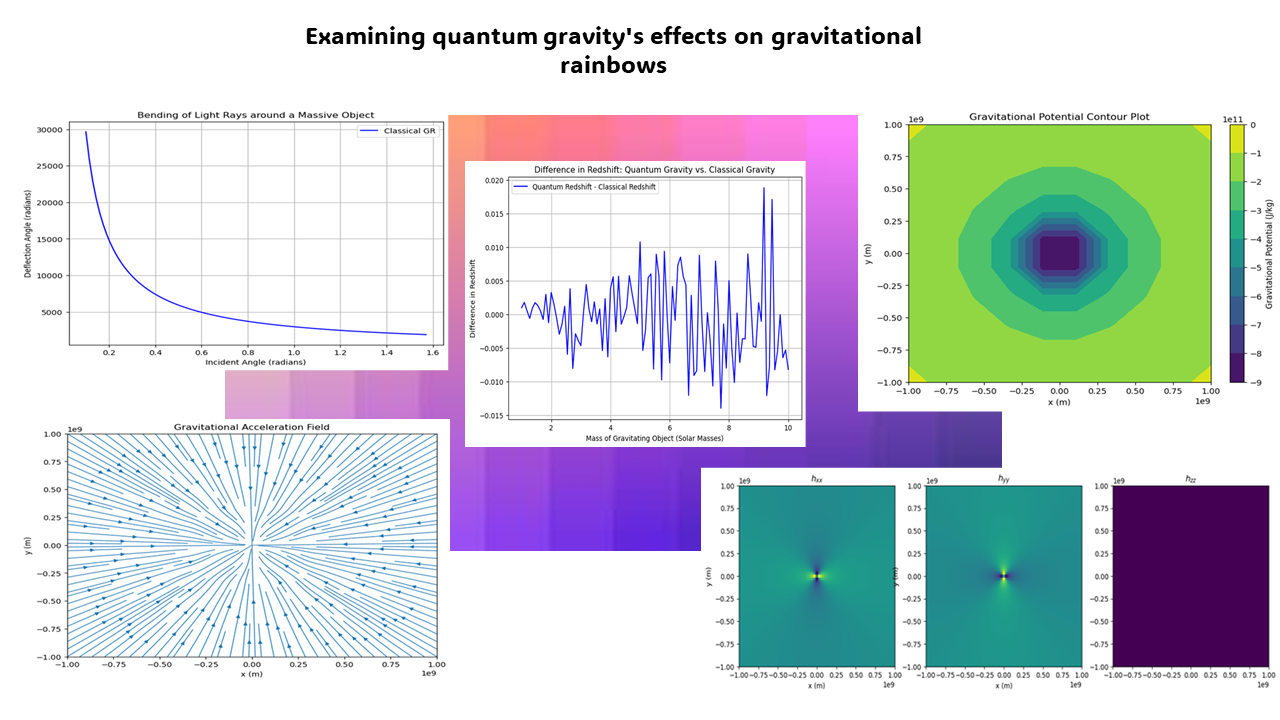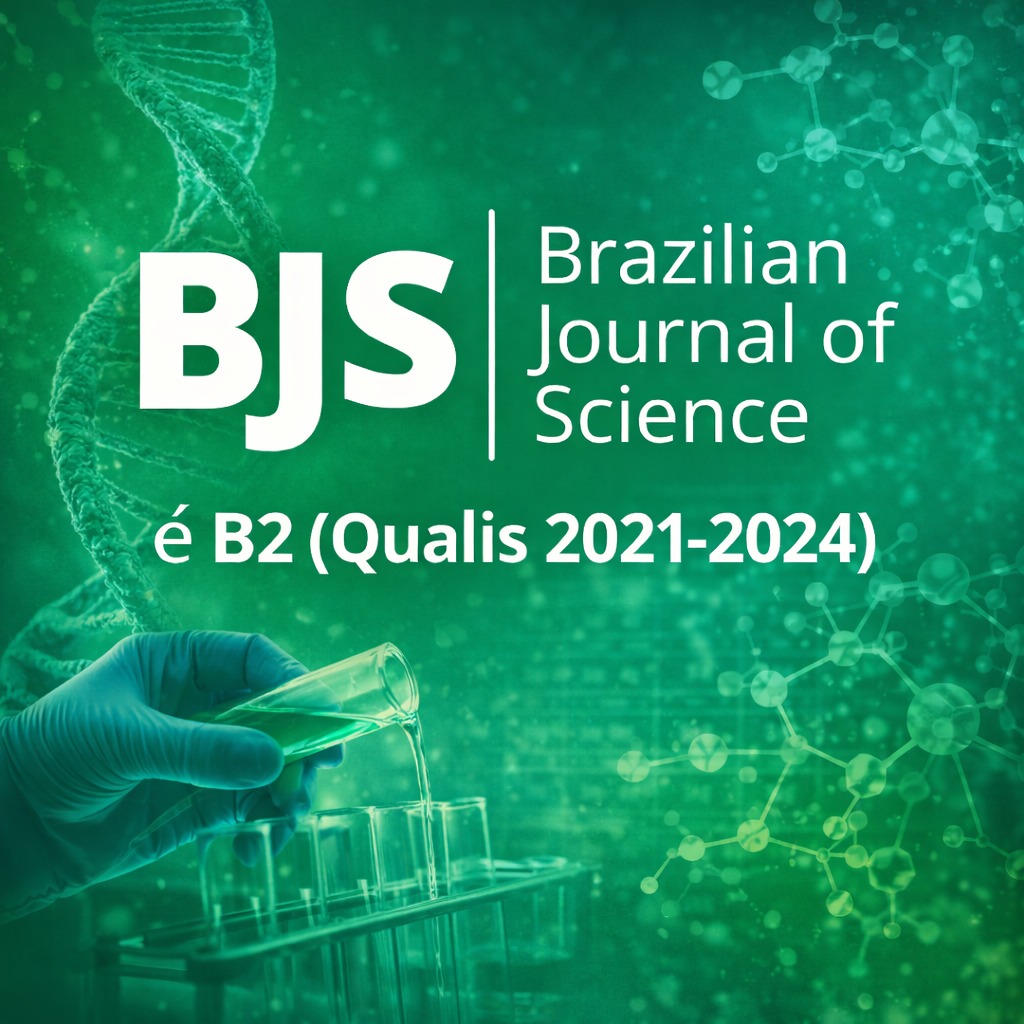Examining quantum gravity's effects on gravitational rainbows
DOI:
https://doi.org/10.14295/bjs.v3i8.609Keywords:
quantum gravity, rainbow, light, quantum, classical mechanicsAbstract
This paper delves into the fundamental implications of quantum gravity on gravitational rainbows, an intriguing phenomenon resulting from the interaction between quantum mechanics and gravity. We explore the theoretical underpinnings of quantum gravity and how they affect light bending around enormous objects, providing insight into the phenomenon known as gravitational rainbows. We investigate the complex interplay between quantum gravity and gravitational events by thoroughly analyzing theoretical models, experimental findings, and computer simulations, providing insights into the essence of the cosmos. The results show that according to the basic theories of light propagation, light moves along the x-axis at a constant speed based on observing a straight-line route between the affine parameters and the x-coordinate. The analysis of shifting gravitational potentials reveals significant influences on the routes taken by light beams traveling through gravitational fields. The impact of quantum gravitational effects is emphasized by the gravitational potential spreading outward, reaching magnitudes of 10 × 1011 and decreasing towards zero outward. Moreover, the gravitational disturbance distribution is closest to the coordinate system center, with minor perturbations in the z-direction, especially in ℎxx and ℎyy. This distribution highlights how gravitational influences vary throughout space. Finally, the analysis shows that, due to a decrease in the impact parameter, the deflection angle of light increases as the angle of incidence lowers. Additionally, the deflection angle is directly influenced by the mass of the deflecting objects, suggesting a proportionate link between mass and deflection. These findings advance our knowledge of gravitational events in astrophysical and cosmological contexts and offer insight into how light behaves in gravitational fields.
References
Amelino-Camelia, G., & Kowalski-Glikman, J. (2017). Quantum-gravity-induced lorentz symmetry breaking and particle physics phenomenology. Living Reviews in Relativity, 16(1), 5-16. DOI: https://doi.org/10.12942/lrr-2013-5
Amelino-Camelia, G., Barcaroli, L., & Gubitosi, G. (2013). Quantum-gravity-induced dual spacetime structure. Physical Review D, 87(10), 104022. DOI: https://doi.org/10.1103/PhysRevD.87.084023
Amelino-Camelia, G., Barcaroli, L., D’Amico, G., Loret, N., & Rosati, G. (2016). Quantum-gravity-induced dual lensing and IceCube neutrinos. General Relavity and Quantum Cosmology, 1. https://doi.org/10.48550/arXiv.1609.03982 DOI: https://doi.org/10.1142/S0218271817500766
Ashtekar, A., & Lewandowski, J. (2004). Background independent quantum gravity: A status report. Classical and Quantum Gravity, 21(15), R53. https://doi.org/10.1088/0264-9381/21/15/R01 DOI: https://doi.org/10.1088/0264-9381/21/15/R01
Barceló, C., Liberati, S., & Visser, M. (2002). Analogue gravity. Living Reviews in Relativity, 14. https://doi.org/10.12942/lrr-2011-3 DOI: https://doi.org/10.12942/lrr-2011-3
Berti, E., & Cardoso, V. (2015). Numerical Methods for Gravitational Wave Astronomy. Living Reviews in Relativity, 18(1), 1-13. DOI: https://doi.org/10.1007/lrr-2015-1
Carlip, S. (2011). Quantum gravity: a progress report. Reports on Progress in Physics, 64(8), 885-897. https://doi.org/10.1088/0034-4885/64/8/301 DOI: https://doi.org/10.1088/0034-4885/64/8/301
Carroll, S. M. (2004). Spacetime and geometry: An introduction to general relativity. Pearson Education, 750 p.
Cunha, P. V. P., Herdeiro, C. A. R., & Radu, E. (2018). Fundamental photon orbits: black hole shadows and spacetime instabilities. General Relativity and Gravitation, 50(4), 42-54. https://doi.org/10.1103/PhysRevD.96.024039 DOI: https://doi.org/10.1103/PhysRevD.96.024039
Einstein, A. (1916). The foundation of the general theory of relativity. Annalen der Physik, 354(7), 769-822. https://doi.org/10.1515/9781400865765-012 DOI: https://doi.org/10.1002/andp.19163540702
Einstein, A. (1915). The field equations of gravitation. Sitzungsberichte der Königlich Preussischen Akademie der Wissenschaften, 844-847 p.
Halliday, D., Resnick, R., & Walker, J. (2013). Fundamentals of physics. John Wiley & Sons.
Hartle, J. B. (2003). Gravity: An introduction to Einstein's general relativity. Addison-Wesley. DOI: https://doi.org/10.1119/1.1604390
Hawking, S. W., & Ellis, G. F. R. (1973). The large-scale structure of space-time. Cambridge University Press. DOI: https://doi.org/10.1017/CBO9780511524646
Liberati, S., & Visser, M. 2017. Gravitational lenses and the prospects for their study. Classical and Quantum Gravity, 34(4), 044001.
Li, Y., Bambi, C., & Papantonopoulos, E. (2017). Black holes in the universe. Cham: Springer.
Mathur, S. D. (2012). Black holes and beyond. High Energy Physics – Theory, 1. https://doi.org/10.48550/arXiv.1205.0776
Marolf, D. (2017). Black holes and beyond. Classical and Quantum Gravity, 34(6), 064004. DOI: https://doi.org/10.1088/1361-6382/aa5e58
Magueijo, J., & Smolin, L. (2003). Lorentz invariance with an invariant energy scale. Physical Review Letters, 88(19), 190403. https://doi.org/10.1103/PhysRevLett.88.190403 DOI: https://doi.org/10.1103/PhysRevLett.88.190403
Misner, C. W., Thorne, K. S., & Wheeler, J. A. (1973). Gravitation. W. H. Freeman and Company.
Pretorius, F. (2017). Numerical Relativity: A Review. Reports on Progress in Physics, 80(12), 126901. https://doi.org/10.48550/arXiv.gr-qc/0106072 DOI: https://doi.org/10.1088/1361-6633/aa7e14
Polchinski, J. (1998). String theory: An introduction to the bosonic string. Cambridge University Press DOI: https://doi.org/10.1017/CBO9780511618123
Rovelli, C. (2004). Quantum gravity. Cambridge University Press. DOI: https://doi.org/10.1017/CBO9780511755804
Shibata, M., & Taniguchi, K. (2016). Numerical Relativity: Starting from Einstein's Equations. Cham: Springer.
Taylor, J. R., & Wheeler, J. A. (1992). Spacetime Physics. W. H. Freeman and Company.
Taveras, V. 2008. Corrections to the classical Hawking radiation spectrum from the generalized uncertainty principle. Physical Review D, 78(6), 064-072.
Thiemann, T. (2007). Modern canonical quantum general relativity. Cambridge University Press. DOI: https://doi.org/10.1017/CBO9780511755682
Thornton, S. T., & Marion, J. B. (2004). Classical Dynamics of Particles and Systems. Cengage Learning.
Virbhadra, K. S., & Ellis, G. F. 2000. Gravitational lensing by naked singularities. Physical Review D, 62(8), 084003. https://doi.org/10.1103/PhysRevD.65.103004 DOI: https://doi.org/10.1103/PhysRevD.65.103004
Wald, R. M. (1984). General Relativity. University of Chicago Press. DOI: https://doi.org/10.7208/chicago/9780226870373.001.0001
Wei, J. J., & Liu, Y. X. (2018). Spectroscopic signature of the black hole event horizon. Physical Review D, 98(10), 104049.
Will, C. M. (2014). The Confrontation between General Relativity and Experiment. Living Reviews in Relativity, 17(1), 4. https://doi.org/10.12942/lrr-2006-3 DOI: https://doi.org/10.12942/lrr-2014-4
Weinberg, S. (1972). Gravitation and cosmology: principles and applications of the general theory of relativity. John Wiley & Sons.

Downloads
Published
How to Cite
Issue
Section
License
Copyright (c) 2024 Belay Sitotaw Goshu

This work is licensed under a Creative Commons Attribution 4.0 International License.
Authors who publish with this journal agree to the following terms:
1) Authors retain copyright and grant the journal right of first publication with the work simultaneously licensed under a Creative Commons Attribution License that allows others to share the work with an acknowledgement of the work's authorship and initial publication in this journal.
2) Authors are able to enter into separate, additional contractual arrangements for the non-exclusive distribution of the journal's published version of the work (e.g., post it to an institutional repository or publish it in a book), with an acknowledgement of its initial publication in this journal.
3) Authors are permitted and encouraged to post their work online (e.g., in institutional repositories or on their website) prior to and during the submission process, as it can lead to productive exchanges, as well as earlier and greater citation of published work.




